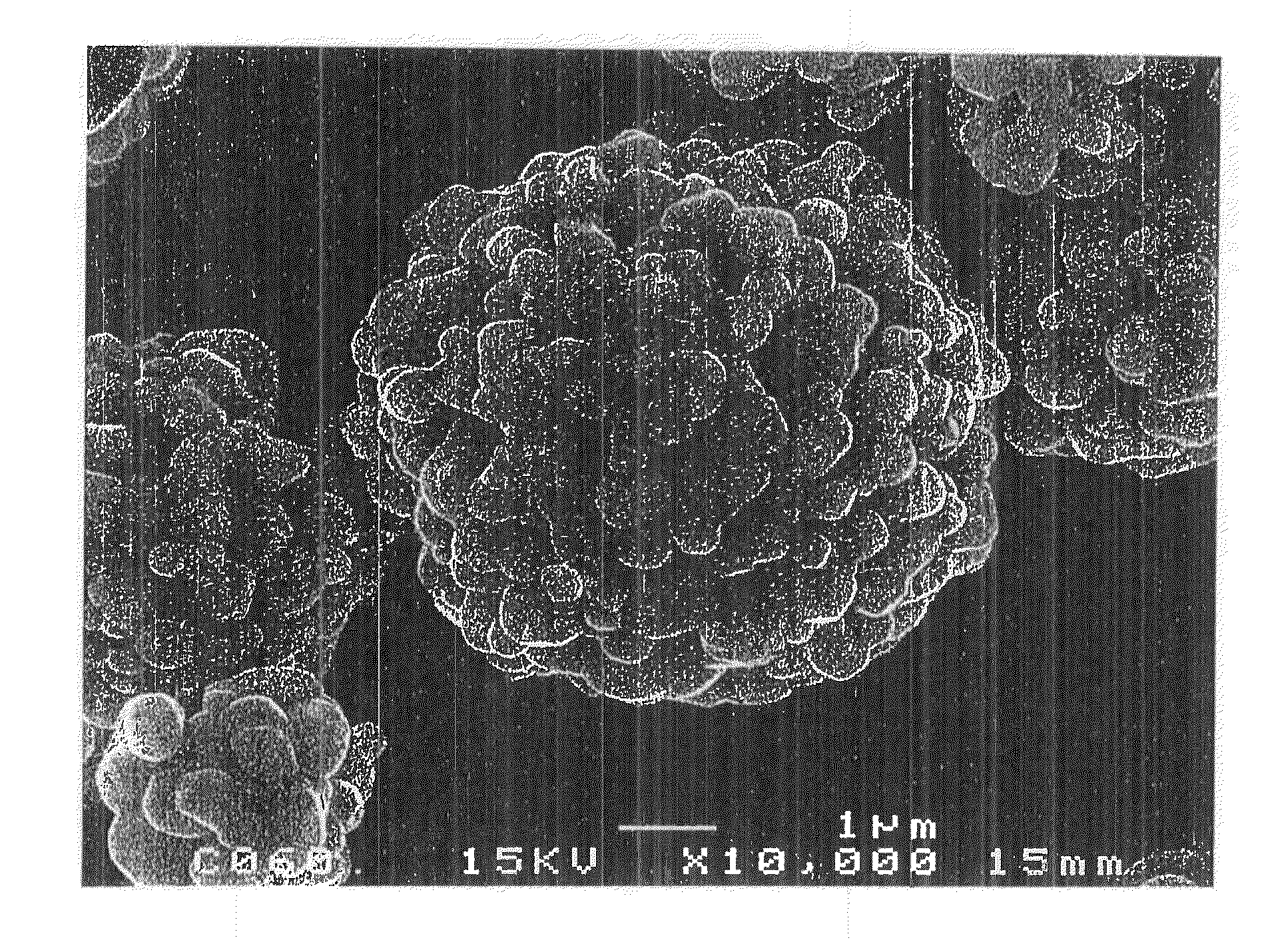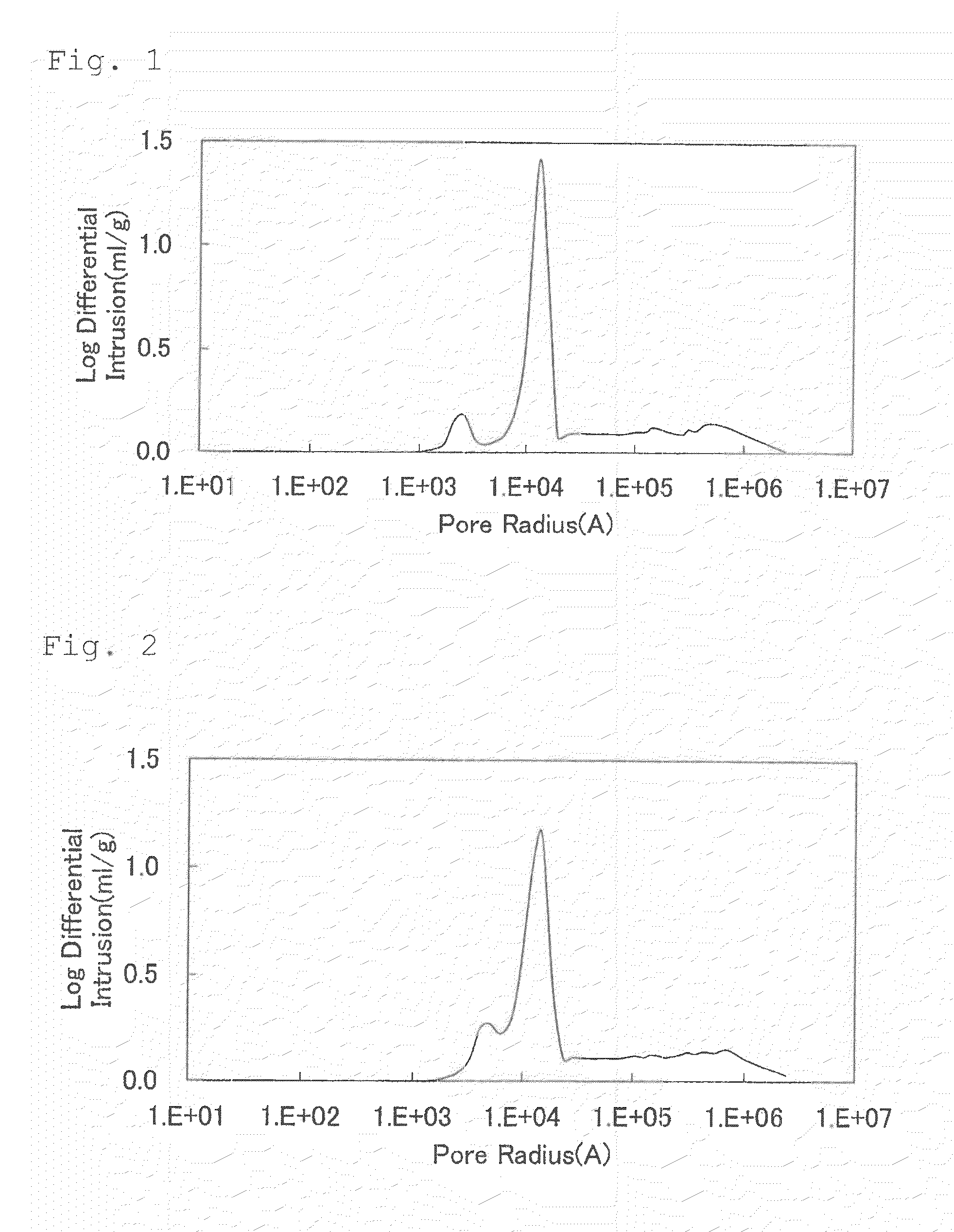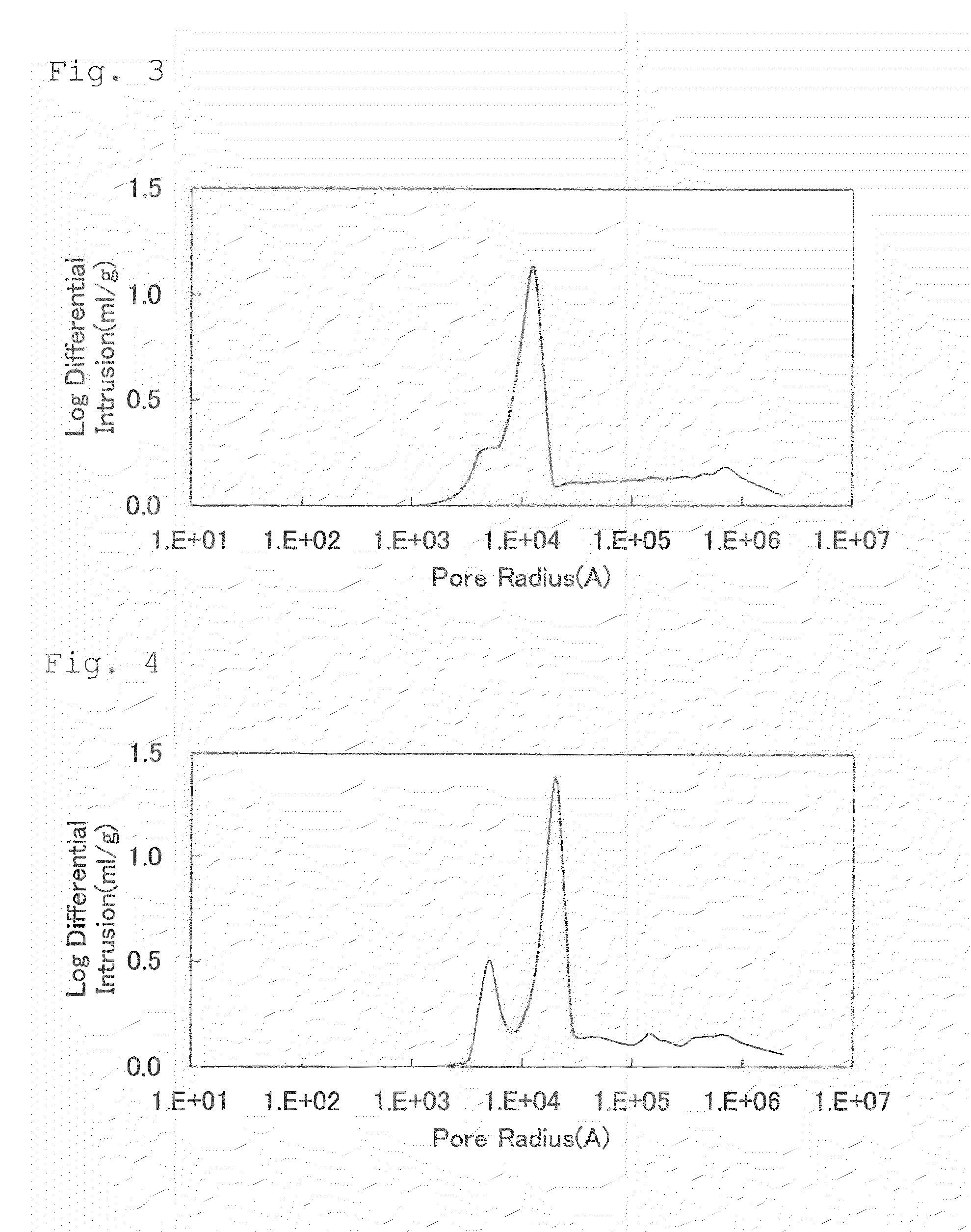Powders for positive-electrode material for lithium secondary battery, process for producing the same, positive electrode for lithium secondary battery employing the same, and lithium secondary battery
- Summary
- Abstract
- Description
- Claims
- Application Information
AI Technical Summary
Benefits of technology
Problems solved by technology
Method used
Image
Examples
example 1
[0328]Li2CO3, Ni(OH)2, Mn3O4, and CoOOH were weighed out so as to result in a Li:Ni:Mn:Co molar ratio of 1.10:0.333:0.333:0.333, and polyphosphoric acid was weighed out so that the amount thereof was 1.6% by mole of the total weight of those starting materials. The ingredients were mixed together. Thereafter, pure water was added thereto to prepare a slurry. A circulating wet pulverizer of the dispersing medium agitation type was used to pulverize the solid components of the slurry to a median diameter of 0.20 μm while stirring the slurry.
[0329]Subsequently, this slurry (solid content, 22% by weight; viscosity, 1,920 cP) was spray-dried using a two-fluid-nozzle type spray dryer (Type LT-8, manufactured by Ohkawara Kakohki Co, Ltd.). Air was used as a drying gas for the spray drying, which was conducted at a drying-gas feed rate G of 45 L / min and a slurry feed rate S of 6×10−3 L / min (gas-liquid ratio G / S=7,500). The dryer inlet temperature was set at 150° C. About 15 g of the particu...
example 2
[0332]Li2CO3, NiCO3, Mn3O4, CoOOH, WO3, and Li3PO4 were weighed out so as to result in a Li:Ni:Mn:Co:W:P molar ratio of 1.12:0.45:0.45:0.10:0.015:0.005, and the ingredients were mixed together. Thereafter, pure water was added thereto to prepare a slurry. A circulating wet pulverizer of the dispersing medium agitation type was used to pulverize the solid components of the slurry to a median diameter of 0.50 μm while stirring the slurry.
[0333]Subsequently, this slurry (solid content, 38% by weight; viscosity, 1,100 cP) was spray-dried using a two-fluid-nozzle type spray dryer (Type LT-8, manufactured by Ohkawara Kakohki Co, Ltd.). Air was used as a drying gas for the spray drying, which was conducted at a drying-gas feed rate G of 45 L / min and a slurry feed rate S of 6×10−3 L / min (gas-liquid ratio G / S=7,500). The dryer inlet temperature was set at 150° C. The particulate powder obtained by the spray drying with the spray dryer was charged into a crucible made of alumina, subsequently...
example 3
[0336]Li2CO3, NiCO3, Mn3O4, CoOOH, WO3, and Li2SiO3 were weighed out so as to result in a Li:Ni:Mn:Co:W:Si molar ratio of 1.12:0.45:0.45:0.10:0.015:0.005, and the ingredients were mixed together. Thereafter, pure water was added thereto to prepare a slurry. A circulating wet pulverizer of the dispersing medium agitation type was used to pulverize the solid components of the slurry to a median diameter of 0.50 μm while stirring the slurry.
[0337]Subsequently, this slurry (solid content, 38% by weight; viscosity, 1,440 cP) was spray-dried using a two-fluid-nozzle type spray dryer (Type LT-8, manufactured by Ohkawara Kakohki Co, Ltd.). Air was used as a drying gas for the spray drying, which was conducted at a drying-gas feed rate G of 45 L / min and a slurry feed rate S of 6×103 L / min (gas-liquid ratio G / S=7,500). The dryer inlet temperature was set at 150° C. The particulate powder obtained by the spray drying with the spray dryer was charged into a crucible made of alumina, subsequentl...
PUM
 Login to View More
Login to View More Abstract
Description
Claims
Application Information
 Login to View More
Login to View More - R&D
- Intellectual Property
- Life Sciences
- Materials
- Tech Scout
- Unparalleled Data Quality
- Higher Quality Content
- 60% Fewer Hallucinations
Browse by: Latest US Patents, China's latest patents, Technical Efficacy Thesaurus, Application Domain, Technology Topic, Popular Technical Reports.
© 2025 PatSnap. All rights reserved.Legal|Privacy policy|Modern Slavery Act Transparency Statement|Sitemap|About US| Contact US: help@patsnap.com



